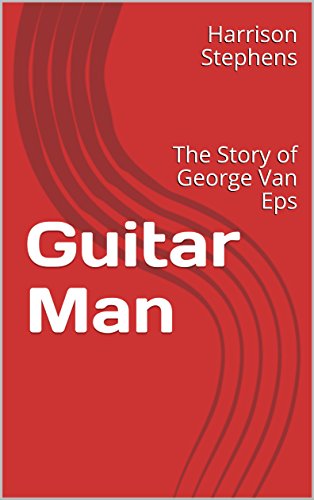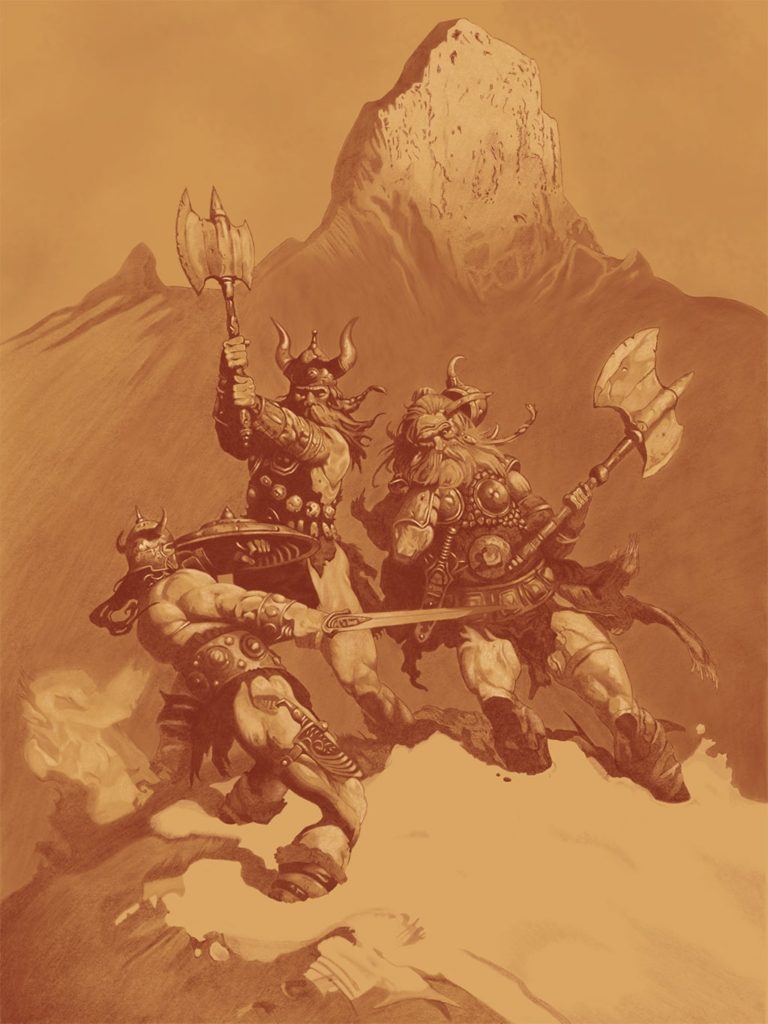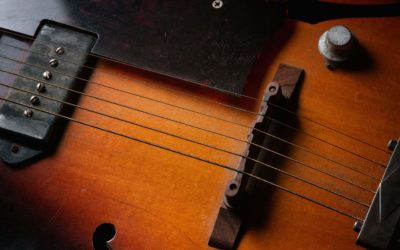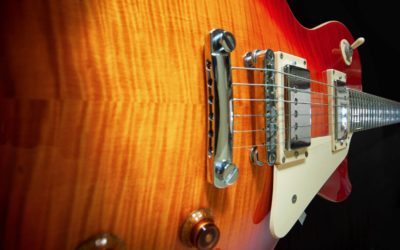Book Review: Guitar Man: The Story of George Van Eps by Harrison Stephens
As a long time fan of George Van Eps, I was delighted to see that someone had taken the time to write a book about the man and his music. The “Father of the 7 String Guitar” has always been a highly influential guitarist for serious players.

I had recently discovered that there was a book, “Guitar Man”, by Harrison Stephens that presented the life and music of guitarist, George Van Eps. I purchased the 146 page book from Amazon and was surprised to see that all of the pages contained double spaced type and there were no diagrams or photos amongst the 17 Chapters.
The manuscript for this book was found in the drawer of the deceased author back in 2015. Who really knows what the final plans were for this material, but fortunately someone had the insight to publish it, and we are now privy to the information that Stephens had gathered. Over the period from the late 80’s to early 90’s, Stephens met with Van Eps every Thursday to discuss his career, and wrote down the information for writing of this book.
The first surprise for me was that Van Eps grew up on Long Island… same as me! So I was not only familiar with many of the areas that he played, but it also provided a historic perspective on the music scene back in those days. For many decades, Long Island had a thriving music scene. Unfortunately, when I was performing in the clubs in the early/mid 80’s, I saw it start to decline, due in large part to the raising of the legal drinking age from 18 to 21. But, I digress…
We see from an early age Van Eps was a studious individual and grew up amongst a talented family of musicians. He had started his musical endeavors by playing the banjo. At age 15 he heard Segovia and this broadened his musical horizons. It’s interesting to see just how many jobs he was getting right from the start.
Besides guitar, Van Eps had a talent for precise mechanical endeavors, which is not surprising when one considers his working amongst watchmakers. His scale model of a working steam locomotive is legendary. However, what definitely came as a surprise to me was his involvement with making the timing device for the Atom Bomb. They made four of them, with two of them being used for Hiroshima and Nagasaki. When he was working on them, he had no idea what they were going to be used for.
Van Eps’s skills as an inventor enabled him to pursue the invention of the 7 String electric guitar. The book details his efforts starting with Epi from Epiphone Guitars and eventually moving to Gretsch Guitars and making a George Van Eps model 7 string guitar. His String Dampener is also discussed. These inventions were ahead of their time.
Both his “Method for Guitar” and “Harmonic Mechanisms” are given coverage, both from the backstory into how the books were conceived, as well as the environment in which they were created. It was mentioned several times throughout the book that he still had a lot of unpublished instructional material – which I would love to see! It even briefly touches on his brother’s book for piano, which sadly, was never published.
One of the most fascinating things in the book was Van Ep’s take on the subject of humidity. Living on an island, this is something that greatly affects my playing in the summer, and I was quite surprised to see a player of Van Ep’s stature tackling the subject matter – as I thought I was the “only person” who had deep concerns about it, and how it influences my playing.
I was surprised to see how big of a role George Gershwin had in his life. Gershwin used to accompany Van Eps’s dad, and was often at their house. Van Eps later worked with Gershwin at various points in his career.
Chapter 11 “Some of the People” is one of my favorite sections in the book. It is a collection of anecdotes about a large number of famous individuals. His story about an encounter with Segovia is quite fascinating, as it spotlights several insights into Segovia, which I found both interesting and surprising! Lots of interesting stories, shenanigans and joking about with the people he had worked with.
SUMMARY
Overall this is a fascinating book about one of the giants of guitar. Insights into the inventor, musician and writer are covered, as well as more personal attributes, such as his detailed machine work and his focused intensity.
A substantial portion of the book is devoted to his family life and upbringing. However, the focus of the book is clearly on this musical endeavours.
Seeing as the only other prime source of information on Van Eps is his interviews in Guitar Player magazine, this book is a welcome addition to any serious guitarist’s library. Although it is fairly thorough in its approach, I found some of the chapters to be a bit too brief, and I yearned for more information – especially the section devoted to Harmonic Mechanisms, as this has been a big influence on my approach to playing.
I am quite happy to see that the book has been published, instead of just sitting in a desk drawer, which is where it was found. So, I’m grateful to whoever decided to make it available, as it is a treasure for those of us who appreciated what George Van Eps did and now future generations will have access to the definitive book on the man and his music.
RECOMMENDED
Final Words
As always, I’d like to take a moment to thank everyone who has purchased my book! I appreciate your interest and support and I look forward to hearing what you do with the material!
I’ve again enclosed a recent master study drawing that I did of Frank Frazetta’s painting, “Snow Giants”, using Procreate on an iPad Pro, with an Apple Pencil 2.






0 Comments